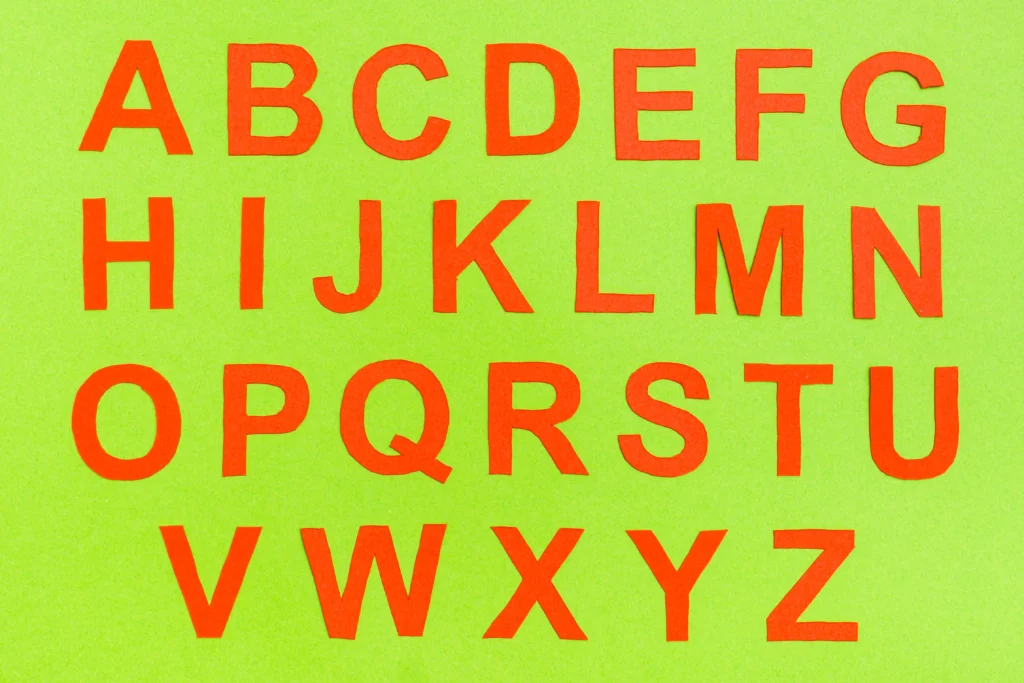In the world of typography, space-saving is a critical consideration, especially in contexts where real estate is limited. Condensed fonts have emerged as a powerful tool to address this challenge. These fonts are designed to occupy less horizontal space while maintaining readability and aesthetic appeal. This article delves into the intricacies of condensed fonts, exploring their history, design principles, applications, and benefits. By the end of this comprehensive guide, you’ll have a thorough understanding of how condensed fonts can be leveraged to save space without compromising on design quality.
The Evolution of Condensed Fonts

Condensed fonts have a rich history that dates back to the early days of printing. The need to fit more text into limited spaces, such as newspapers and posters, drove the development of these fonts. Early examples include the “Egyptian” and “Grotesque” typefaces, which were designed to be more compact than their predecessors.
As printing technology advanced, so did the design of condensed fonts. The 19th century saw the rise of “Fat Face” typefaces, which were bold and condensed, making them ideal for advertising. In the 20th century, the advent of digital typography further expanded the possibilities for condensed fonts, allowing for greater precision and variety in their design.
Today, condensed fonts are a staple in both print and digital media. They are used in a wide range of applications, from headlines and logos to user interfaces and mobile apps. The evolution of condensed fonts reflects the ongoing need to balance space-saving with readability and aesthetic appeal.
Design Principles of Condensed Fonts

Creating a condensed font involves more than simply squeezing the characters together. It requires a careful balance of several design principles to ensure that the font remains legible and visually appealing. Here are some key considerations:
- Proportional Scaling: Condensed fonts are typically created by reducing the width of characters while maintaining their height. This proportional scaling ensures that the font remains legible even when compressed.
- Letter Spacing: Proper letter spacing, or kerning, is crucial in condensed fonts. Too much spacing can make the text look disjointed, while too little can make it difficult to read.
- Stroke Weight: The thickness of the strokes in a condensed font can impact its readability. Designers often adjust the stroke weight to ensure that the font remains clear and easy to read, even at smaller sizes.
- Counter Shapes: The internal spaces within characters, known as counters, must be carefully designed to maintain legibility. In condensed fonts, these spaces are often narrower, but they must still be large enough to distinguish one character from another.
- X-Height: The height of lowercase letters, or x-height, plays a significant role in the readability of condensed fonts. A larger x-height can improve legibility, especially at smaller sizes.
By adhering to these design principles, typographers can create condensed fonts that are both space-saving and easy to read.
Applications of Condensed Fonts

Condensed fonts are used in a wide range of applications, each with its own unique requirements and challenges. Here are some of the most common uses:
- Print Media: Newspapers, magazines, and posters often use condensed fonts to fit more text into limited space. Headlines, in particular, benefit from the space-saving properties of condensed fonts.
- Digital Media: Websites, mobile apps, and e-books frequently use condensed fonts to optimize screen real estate. User interfaces, in particular, benefit from the compact nature of these fonts.
- Advertising: Billboards, banners, and other forms of advertising often rely on condensed fonts to convey messages in a limited space. The bold and compact nature of these fonts makes them ideal for capturing attention.
- Branding: Many brands use condensed fonts in their logos and marketing materials to create a distinctive and memorable identity. The compact nature of these fonts allows for more creative and impactful designs.
- Packaging: Product packaging often uses condensed fonts to fit essential information, such as ingredients and instructions, into a limited space. The readability of these fonts is crucial in this context.
These applications demonstrate the versatility and importance of condensed fonts in various industries.
Benefits of Using Condensed Fonts

Condensed fonts offer several advantages that make them a popular choice for designers and typographers. Here are some of the key benefits:
- Space Efficiency: The primary benefit of condensed fonts is their ability to save space. By reducing the width of characters, these fonts allow more text to fit into a given area, making them ideal for applications with limited space.
- Improved Readability: When designed correctly, condensed fonts can be highly readable, even at smaller sizes. This makes them suitable for a wide range of applications, from print to digital media.
- Visual Impact: Condensed fonts often have a bold and striking appearance, making them ideal for headlines, logos, and advertising. Their compact nature can create a strong visual impact that captures attention.
- Versatility: Condensed fonts are available in a wide range of styles, from serif to sans-serif, and can be used in various contexts. This versatility makes them a valuable tool for designers.
- Cost Savings: In print media, using condensed fonts can reduce the amount of paper and ink needed, leading to cost savings. This is particularly important for large-scale printing projects.
These benefits highlight the value of condensed fonts in both design and practical applications.
Examples of Popular Condensed Fonts

There are many condensed fonts available today, each with its own unique characteristics and applications. Here are some popular examples:
- Helvetica Condensed: A classic sans-serif font, Helvetica Condensed is known for its clean and modern appearance. It is widely used in print and digital media for its readability and versatility.
- Futura Condensed: This geometric sans-serif font is popular for its sleek and futuristic design. It is often used in advertising and branding to create a bold and contemporary look.
- Bodoni Condensed: A serif font with a high contrast between thick and thin strokes, Bodoni Condensed is often used in fashion and luxury branding for its elegant and sophisticated appearance.
- Roboto Condensed: Designed for digital interfaces, Roboto Condensed is a sans-serif font that offers excellent readability on screens. It is commonly used in mobile apps and websites.
- Impact: Known for its bold and heavy design, Impact is a condensed font that is often used for headlines and advertising. Its strong visual impact makes it ideal for capturing attention.
These examples illustrate the diversity and versatility of condensed fonts in various design contexts.
Challenges and Considerations

While condensed fonts offer many benefits, they also come with certain challenges and considerations. Here are some key points to keep in mind:
- Readability: One of the main challenges with condensed fonts is maintaining readability. If the font is too compressed, it can become difficult to read, especially at smaller sizes. Designers must carefully balance compression with legibility.
- Context: The appropriateness of a condensed font depends on the context in which it is used. For example, a highly condensed font may not be suitable for body text, where readability is paramount.
- Compatibility: Not all condensed fonts are compatible with every type of media. For example, some fonts may not render well on certain screens or in specific printing processes. It’s important to test fonts in their intended context before finalizing a design.
- Licensing: Some condensed fonts are proprietary and require a license for use. Designers must ensure that they have the appropriate licenses to avoid legal issues.
- Design Consistency: When using condensed fonts, it’s important to maintain design consistency across different elements of a project. This includes ensuring that the font complements other design elements, such as colors and imagery.
By considering these challenges and taking appropriate measures, designers can effectively leverage condensed fonts in their projects.
Future Trends in Condensed Fonts

As technology and design trends continue to evolve, so too will the use of condensed fonts. Here are some future trends to watch for:
- Variable Fonts: Variable fonts, which allow for dynamic adjustment of font attributes such as weight and width, are becoming increasingly popular. This technology could lead to more versatile and adaptable condensed fonts.
- Augmented Reality (AR) and Virtual Reality (VR): As AR and VR technologies become more prevalent, condensed fonts may play a role in optimizing text display in these immersive environments.
- Custom Fonts: With the rise of digital design tools, more brands are creating custom fonts tailored to their specific needs. This trend could lead to the development of unique condensed fonts that reflect a brand’s identity.
- Accessibility: As accessibility becomes a greater focus in design, condensed fonts may be adapted to improve readability for individuals with visual impairments. This could involve adjustments to letter spacing, stroke weight, and other design elements.
- Environmental Considerations: As sustainability becomes a priority, condensed fonts may be used more frequently in print media to reduce paper and ink usage, contributing to environmental conservation efforts.
These trends highlight the ongoing relevance and potential for innovation in the field of condensed fonts.
Conclusion
Condensed fonts are a powerful tool for saving space while maintaining readability and aesthetic appeal. Their evolution, design principles, and diverse applications demonstrate their importance in both print and digital media. By understanding the benefits and challenges of condensed fonts, designers can effectively leverage them to create impactful and efficient designs.
As technology and design trends continue to evolve, condensed fonts will likely play an even greater role in optimizing text display across various media. Whether used in print, digital interfaces, or branding, condensed fonts offer a versatile and space-saving solution that meets the demands of modern design.
In summary, condensed fonts are an essential element of typography that balance space efficiency with design quality. By carefully considering their design principles and applications, designers can harness the full potential of condensed fonts to create compelling and effective visual communication.
Q&A
Q: What are condensed fonts?
A: Condensed fonts are typefaces designed to occupy less horizontal space by reducing the width of characters while maintaining their height. They are used to fit more text into limited spaces without compromising readability.
Q: Where are condensed fonts commonly used?
A: Condensed fonts are commonly used in print media (newspapers, magazines, posters), digital media (websites, mobile apps, e-books), advertising (billboards, banners), branding (logos, marketing materials), and packaging.
Q: What are the benefits of using condensed fonts?
A: The benefits of using condensed fonts include space efficiency, improved readability, visual impact, versatility, and cost savings in print media.
Q: What are some popular condensed fonts?
A: Some popular condensed fonts include Helvetica Condensed, Futura Condensed, Bodoni Condensed, Roboto Condensed, and Impact.
Q: What challenges are associated with condensed fonts?
A: Challenges associated with condensed fonts include maintaining readability, ensuring context appropriateness, compatibility with different media, licensing requirements, and maintaining design consistency.
Q: What future trends can we expect in condensed fonts?
A: Future trends in condensed fonts include the rise of variable fonts, increased use in AR and VR environments, the development of custom fonts, a focus on accessibility, and environmental considerations in print media.

